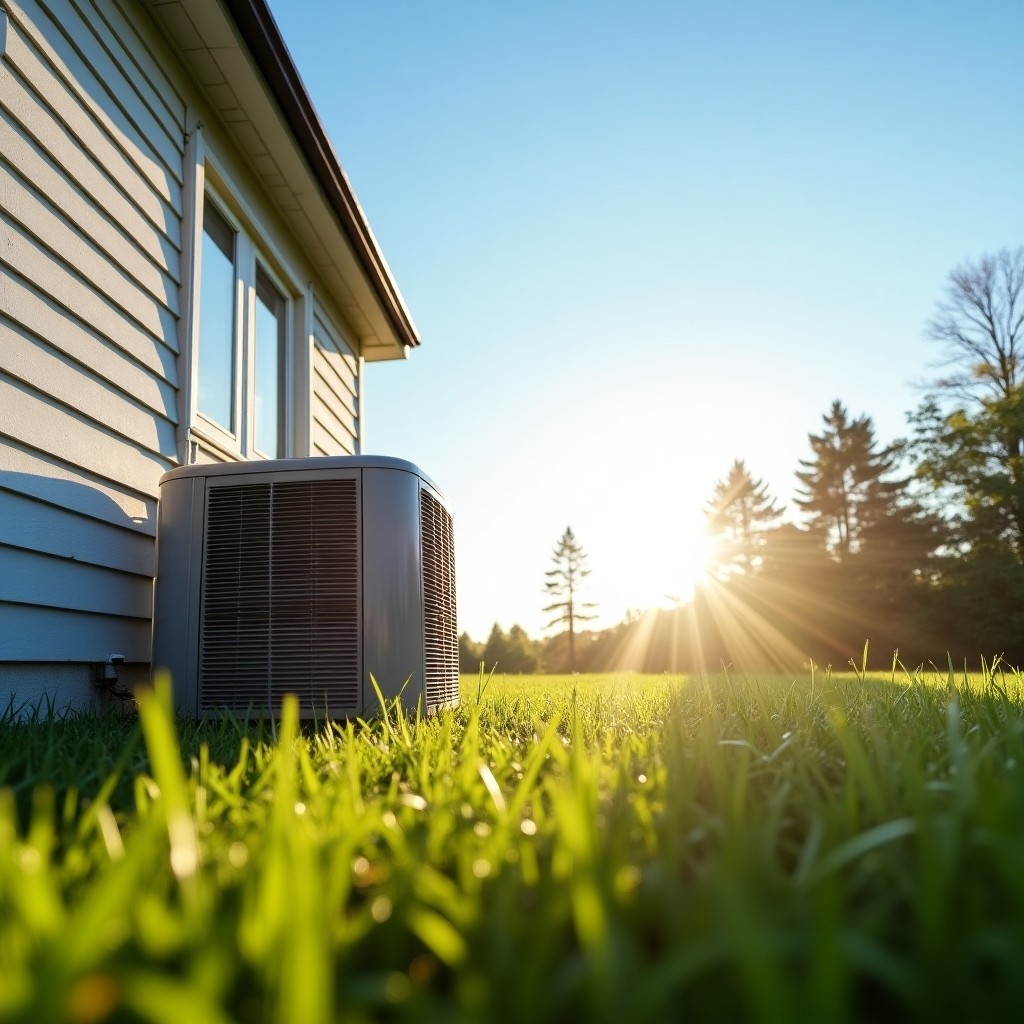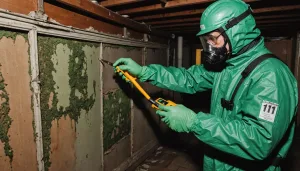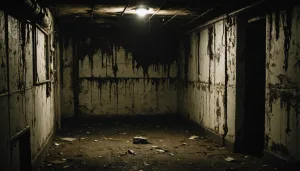To effectively manage your home’s heating and cooling needs, it’s crucial to have a firm understanding of your HVAC system. With this knowledge, you can enhance your home comfort and achieve significant cost savings on your energy bills. Most modern homes are equipped with HVAC systems that serve the dual purpose of regulating temperature and filtering indoor air to maintain a healthy living environment.
At its core, an HVAC system comprises several key components: the furnace, air conditioner, heat pump, ductwork, vents, and thermostat. Each part plays a specific role in ensuring that the system operates efficiently. For instance, the furnace is responsible for heating the air, while the air conditioner cools it. The heat pump can perform both heating and cooling functions, providing flexibility and efficiency in temperature regulation.
Ductwork and vents are essential for distributing heated or cooled air throughout your home. Ensuring these components remain unobstructed is vital for even air distribution. Meanwhile, the thermostat serves as the control center for the entire system. It allows homeowners to set their preferred temperature and can often be programmed to optimize energy use during different times of the day.
Familiarizing yourself with these components and understanding how they work together enhances your ability to perform essential HVAC maintenance and troubleshoot minor issues before they become costly repairs. For example, recognizing that uneven temperature in rooms may be due to blocked vents or ductwork problems enables prompt resolution without needing immediate professional intervention.
Understanding the correlation between different HVAC system types and their efficiency can lead to informed decision-making. Below is a comparison table illustrating the typical efficiency range and cost considerations for different types of HVAC systems commonly found in homes:
| System Type | Efficiency (SEER Rating) | Typical Installation Cost | Maintenance Requirements |
| Central Air Conditioner | 13-26 | $3,000 – $7,000 | Bi-annual professional checks, regular air filter changes |
| Heat Pump | 14-20 | $4,000 – $8,000 | Annual inspections, filter maintenance, coil cleaning |
| Furnace | 80-99% AFUE | $2,500 – $6,000 | Yearly inspection, regular filter replacement |
Gaining a comprehensive understanding of your HVAC system can lead to strategic decisions that not only prioritize HVAC maintenance but also support long-term cost savings and enhanced home comfort. Investing a little time to become familiar with your system’s components and their respective functions will pay dividends in peace of mind and efficient energy use.
changing air filters regularly
One of the simplest yet most impactful HVAC maintenance tasks is changing your air filters regularly. This action is vital for maintaining home comfort, improving air quality, and achieving cost savings through enhanced energy efficiency. Air filters trap dust, pollen, and other airborne particles, ensuring that only clean air circulates throughout your home. Over time, these filters become clogged and can restrict airflow, causing your HVAC system to work harder and consume more energy. Here’s a step-by-step guide to help you change your air filters effectively:
- Locate Your Air Filter: Determine the location of your HVAC system’s air filter. You can typically find it near your furnace, air handler, or in a return air vent. Some homes may have multiple filters in different locations, so make sure to check all possibilities.
- Turn Off the HVAC System: For safety reasons, it’s crucial to turn off your HVAC system before replacing the filter. You can do this by using the service switch located near the unit or turning off the system at the thermostat.
- Remove the Old Filter: Slide out the old air filter carefully to avoid spreading dust and debris. Take a moment to examine the filter. A dirty or clogged filter indicates it’s time for a change. Remember to note the filter size printed on its frame, which you’ll need to purchase the correct replacement.
- Choose the Right Replacement: Air filters come in various sizes and efficiency ratings. Select a filter that fits your unit correctly. Higher MERV (Minimum Efficiency Reporting Value) ratings indicate better filtering performance but ensure that it’s suitable for your system as it could affect airflow if too restrictive.
- Install the New Filter: Insert the new air filter in the same direction as the old one. Most filters have an arrow indicating airflow direction; make sure this arrow points toward the blower motor or furnace.
- Secure and Seal the Filter Compartment: Once the new filter is in place, ensure that it’s correctly seated and the compartment is closed and secured to prevent unfiltered air from bypassing the filter.
- Turn On the HVAC System: With the new filter installed, you can safely turn your HVAC system back on and enjoy the benefits of improved airflow and air quality.
- Schedule Regular Replacements: Create a calendar reminder or set an alert on your phone to change your air filters every one to three months, depending on usage and filter type. Homes with pets or allergy sufferers may require more frequent changes.
By regularly replacing your air filters, you’re not only ensuring a supply of clean, healthy air but also optimizing your HVAC system for energy efficiency and longevity, which leads to substantial cost savings over time.
cleaning and clearing vents
Ensuring that vents in your home are clean and unobstructed is an integral part of maintaining an efficient HVAC system. Over time, dust, pet hair, and other debris can accumulate in and around vents, potentially obstructing airflow. This can lead to uneven heating or cooling, which might force your HVAC system to work harder, increasing wear and reducing its overall lifespan.
Begin by regularly inspecting your home’s vents. Use a vacuum with a hose attachment to remove any visible dust or debris from the registers and surrounding areas. For deeper cleaning, consider removing the vent covers entirely. This process might uncover a more significant accumulation of dirt or blockages that are not visible from the surface. Soapy water and a soft brush can be effective in washing vent covers; ensure they are completely dry before reattaching them. If the interior of the ducts seems to need cleaning, it may be prudent to consult a professional for duct cleaning services.
In addition to cleaning, it’s crucial to keep vents unblocked. Avoid placing furniture, curtains, or carpets over vents as it can drastically affect airflow, impacting home comfort. Reduced airflow can lead to hot and cold spots within your living space, prompting the system to run more frequently than necessary, thus increasing your energy bills. Open vents fully and secure any movable parts to maintain optimal distribution of air throughout your home.
Keeping your vents clean is, essentially, a straightforward task that contributes to effective HVAC maintenance. Improved airflow from clean vents enhances energy efficiency, thereby providing significant cost savings. With the system operating at peak performance, expect better home comfort, as the temperature conditions in each room will be more consistent. The ability to maintain your desired indoor climate with minimal strain on your system is a compelling benefit of this routine, yet crucial, maintenance step.
checking and maintaining the thermostat
A central component of efficient HVAC maintenance is proper care of the thermostat, the device that acts as the command center for your heating and cooling system. A well-functioning thermostat ensures your system operates efficiently, contributing to home comfort and potential cost savings.
Regular checking of the thermostat is a simple yet effective way to ensure your HVAC system’s optimal performance. Begin by verifying that your thermostat is level, clean, and free from dust or debris that could interfere with its operation. Digital thermostats, in particular, may require periodic dusting using a soft cloth or brush to keep the screen and vents clean.
For those using older mechanical thermostats, it may be necessary to recalibrate them to ensure accurate temperature readings. Calibration can be done by comparing the thermostat’s reading with an accurate thermometer placed in the same room, ideally at the same height. If discrepancies are found, refer to the user manual or contact a professional to make adjustments.
Taking advantage of programmable or smart thermostats can amplify your HVAC system’s efficiency. These devices allow you to set different temperatures for various times of the day, optimizing energy use by adjusting settings when no one is home or during the night when cooler temperatures prevail. By effectively programming these thermostats, your system can run less frequently, which enhances overall energy efficiency and yields cost savings.
Moreover, if you are still using a manual thermostat, consider upgrading to a programmable or smart variant. Modern smart thermostats learn from your behavior and can be controlled remotely via smartphone applications, offering added convenience and the ability to monitor your HVAC system’s performance even when you’re away from home.
It’s also crucial to periodically check that your thermostat is located in an optimal spot. Avoid placing it in direct sunlight, near drafts, or on exterior walls where temperature fluctuations can lead to inaccurate readings and inefficient system operation. An incorrectly placed thermostat can cause unnecessary wear on your HVAC system, reduce home comfort, and increase energy costs over time.
Maintaining a functional thermostat is a key element of HVAC maintenance, as it allows for accurate system control and promotes balanced home climates, leading to enhanced comfort and significant cost savings. Take the time to care for this small but vital component, ensuring your heating and cooling systems operate seamlessly year-round.
scheduling professional inspections
To maintain an efficiently running HVAC system, it’s vital to schedule regular professional inspections. These inspections ensure every element of your heating and cooling system is functioning optimally, which can help prevent unexpected breakdowns, extend the system’s lifespan, and contribute to substantial cost savings on energy bills.
Professional HVAC technicians are trained to identify and address issues that might not be apparent to the untrained eye. During an inspection, they will typically check the major components of your system, including the furnace, air conditioner, heat pump, and ductwork. The technician will look for signs of wear and tear, clean critical components, and ensure that all parts are in good working order. This thorough examination helps in maintaining home comfort by ensuring the system efficiently heats or cools the space as needed.
A crucial part of an HVAC maintenance visit is the evaluation of electrical connections and system controls. Loose connections or faulty controls can lead to inefficient operation or system failure. Additionally, technicians will lubricate moving parts to reduce friction, which can further improve efficiency and prevent unnecessary wear that could lead to premature system failure.
Refrigerant level checks are also a vital part of the inspection process for systems that include cooling components. The correct amount of refrigerant is necessary for the system to cool efficiently. Low refrigerant levels can cause the system to work harder, shortening its lifespan and increasing electricity costs. Similarly, inspection of the heat exchanger in heating systems can prevent the potential hazard of a carbon monoxide leak, safeguarding your home’s occupants.
Moreover, these inspections are an opportunity to receive expert advice on system enhancements or upgrades, such as the integration of a smart thermostat for better energy management. Technicians can also recommend when it might be more economically viable to replace rather than repair an aging system, ultimately leading to long-term savings through enhanced energy efficiency and reduced repair costs.
Regular professional inspections are more than just preventative maintenance. They’re a strategic investment in the longevity and efficiency of your HVAC system, ensuring it operates at peak performance year-round. By weaving these checks into your HVAC maintenance routine, you secure your home comfort and protect against future costly repairs.
In conclusion, diligent HVAC maintenance is not merely a task but an investment in your home’s overall comfort and efficiency. By understanding your system, regularly changing air filters, keeping vents clean, maintaining the thermostat, and scheduling professional inspections, you ensure optimal performance and extend the lifespan of your HVAC system. These practices not only enhance your home environment but also provide significant cost savings, making them essential for every homeowner. Implementing these maintenance tips will pay dividends in comfort and efficiency, creating a more enjoyable and economical home climate.





